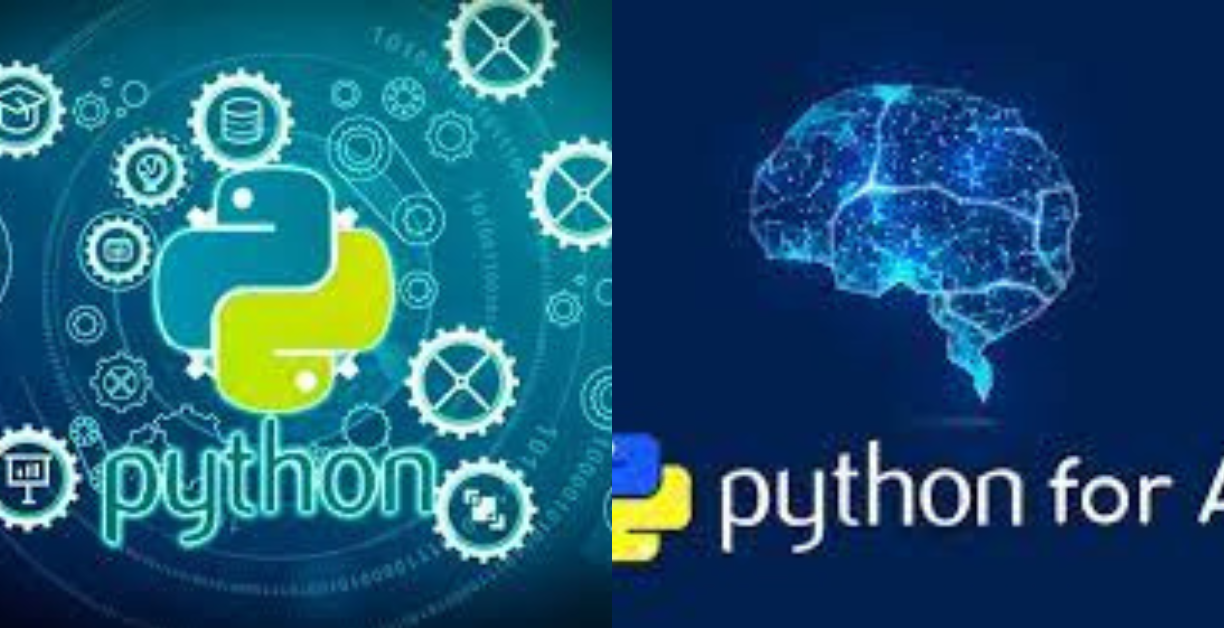how to make artificial intelligence in python , In Python, artificial intelligence (AI) is usually created by utilising libraries and frameworks that offer deep learning and machine learning methods. Python programmes for machine learning and deep learning that are frequently used to build artificial intelligence include TensorFlow, PyTorch, and scikit-learn. Below is a summary of the first steps that need to be taken:
how to make artificial intelligence in python
Create a new Python application first.
Let’s start by opening Replit and making a new Python application. Click the Start Coding icon on the page to log in or register. You can also click the Sign up or Log in buttons on the website, which are situated in the upper right corner.
After registering or logging in, you may launch a new Python programme by clicking the Create button in the upper left corner of the screen. Choose Python from the Template menu, then give your software a name, like Python AI chatbot.

Read more
how to build your own artificial intelligence
role of artificial intelligence in business process transformation
how to make artificial intelligence software
Step 1: Define the Problem
Identifying the issue that needs to be solved is the first step in developing an AI. Predictive modelling, computer vision, or natural language processing may be used in this.
Expert users might work on challenging issues that call for deep learning methods. Before taking the next action, it is imperative to have a thorough understanding of the issue.
Step 2: Gather and Prepare Information
The basis of any AI endeavour is data.The Sunscrapers blog offers guidance on gathering and preparing data, including preprocessing and data cleaning.
You might work with huge datasets as an advanced user, which need to be preprocessed before being used in an AI model. This could entail separating the data into training, validation, and testing sets as well as cleaning and formatting the data appropriately. In order to expand the quantity of your dataset, you might also need to employ strategies like data augmentation.
Selecting an AI Model in Step 3
You are an expert in a wide variety of AI models, such as transformers, recurrent neural networks, and convolutional neural networks. Selecting an AI model that makes sense for your particular dataset and problem is crucial. To determine which model performs best, you might need to test out a few different models and hyperparameters.
Step 4: Let the AI Model Learn
It can take a while to train an AI model, particularly for complicated models and big datasets. You might need to employ strategies like distributed training to expedite the process if you have a thorough grasp. To boost your model’s performance, you might additionally need to apply sophisticated optimisation methods like Adam or RMSprop.
Step 5: The AI Model’s Evaluation
It’s crucial to assess your model’s performance using testing and validation data after it has been trained. As a proficient user, you might have to assess your model’s performance using sophisticated measures like F1 score, precision, recall, and AUC-ROC. It can also be necessary to employ methods like cross-validation in order to obtain a more precise assessment of your model’s performance. You are almost know by read this article about how to make artificial intelligence in python. Read the other steps.
Step 6: Test the AI Model
An essential phase in the development process is testing your AI model. If you’re an experienced user, you might need to employ sophisticated methods like adversarial testing to find any flaws in your model. To increase the robustness of your model, you might also need to employ strategies like model ensembling.
Seventh Step: Use the AI Model
Deploying your AI model in the actual world is the last stage, after you’re happy with it. This essentially implies allowing others to utilise it. If you’re an advanced user, you might need to employ methods like containerisation to make sure your model can be scaled and distributed.
A/B testing is one strategy that you might need to employ in order to verify the performance of your model. Think about utilising more resources and techniques like distributed computing, GPUs, and TPUs.

Step 8: Observe and Adjust
Keep an eye on your AI system’s performance over time and make adjustments as needed. This can entail retraining the model using various approaches or updating it with fresh data.
Concluding remarks
Due to its ease of use, adaptability, and availability of strong libraries and frameworks like TensorFlow, Keras, and PyTorch that facilitate the creation of sophisticated AI models, Python has emerged as one of the most popular languages for artificial intelligence. You can learn more about artificial intelligence (AI) and the resources available for developing intelligent systems by investigating the various applications of Python in this field.
Python offers something for every level of AI developer, from novices to experts.
Python AI development may be rewarding and demanding at the same time. Through the procedures listed in this blog article, you may build your own AI project and learn more about machine learning and artificial intelligence.
It takes time and care to build an AI, but with the correct resources and understanding, you may produce something truly amazing.
Best wishes! You’ve just finished building your first Python A and known about how to make an artificial intelligence program in python! You can increase its intelligence by adding more responses and keywords, experimenting with some of the projects and libraries listed below, or signing up for our Python for AI course.
You have learned how to make an artificial intelligence program in python by building a chatbot that chooses random responses from a list and logs keywords and responses it learns from lists. Take advantage of our Python camps and AI Explorers sessions, where experts from MIT, Stanford, and Google will teach you everything you need to know about creating AI apps and improving the intelligence of your chatbot.















